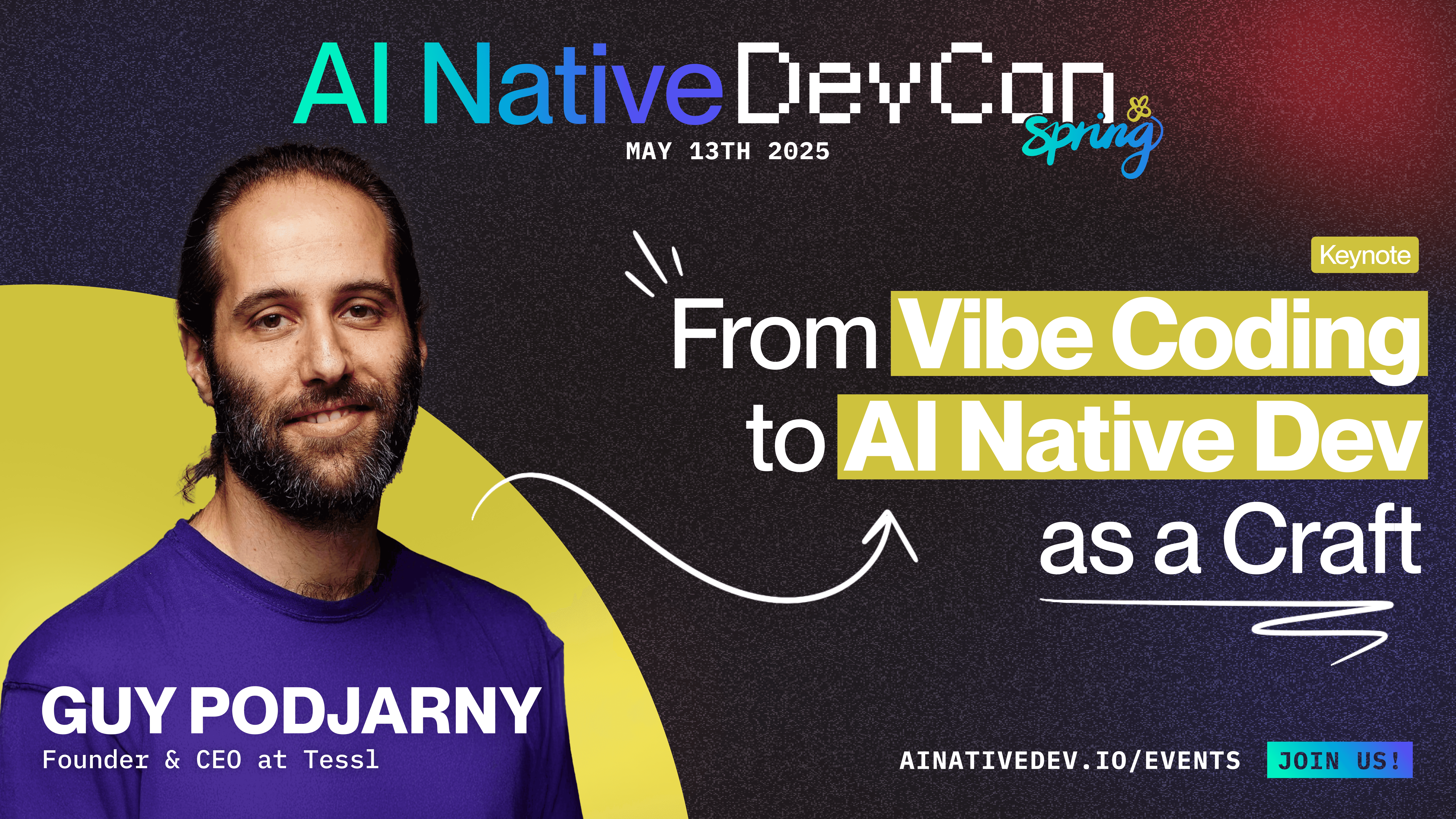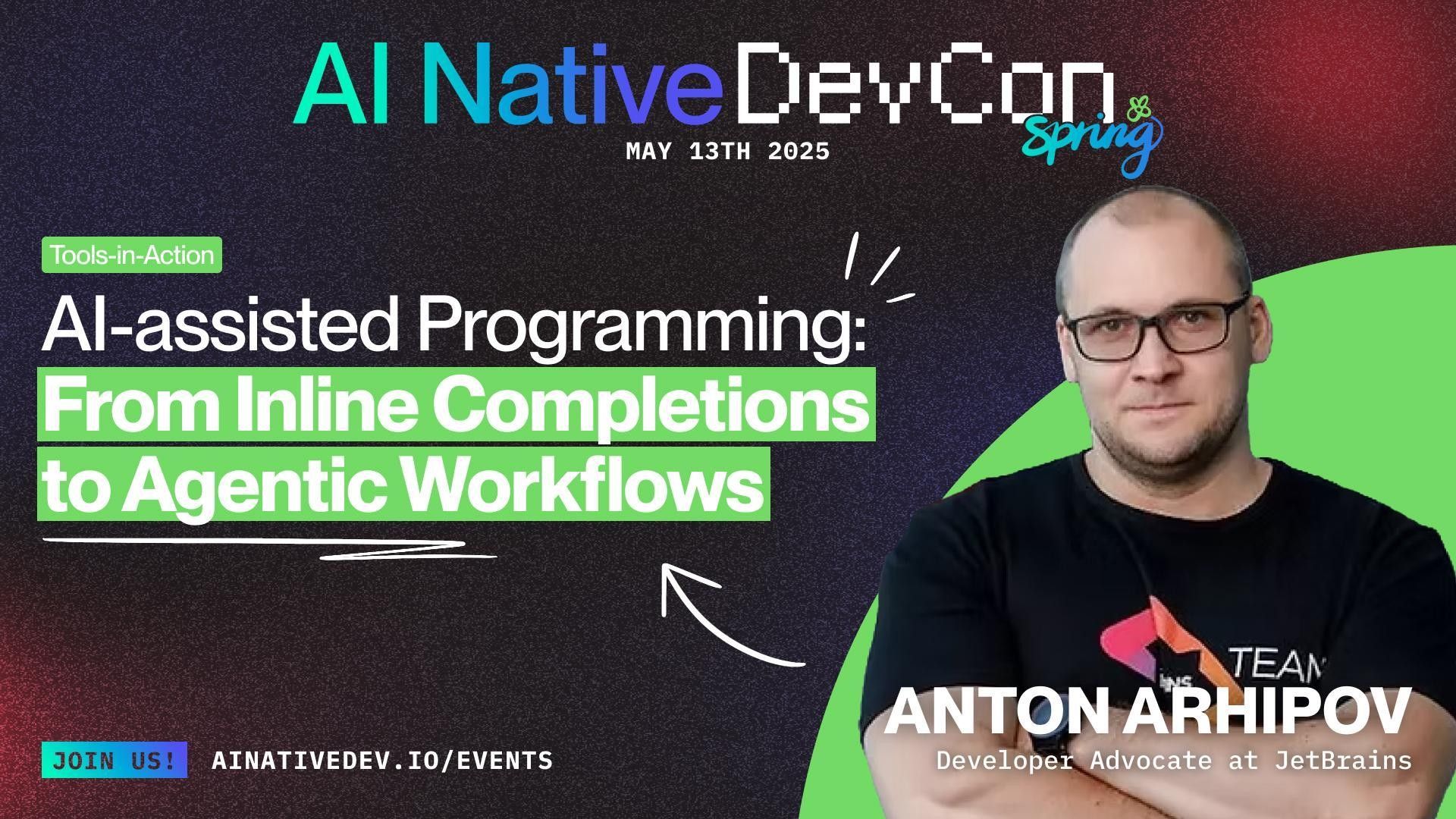
From Vibe Coding to AI Native Dev as a Craft

Guy Podjarny
5 min read13 May 2025
Founder & CEO, Tessl
In this talk
AI has changed how we build software. Today’s wave of “vibe coding”, rapid prototyping, prompt-driven experiments, and disposable applications, has unlocked an explosion of creativity. But if you’re building software that needs to live longer, scale higher or perform important actions, it sets a different bar. How can we tap this AI magic for building important things?
This keynote outlines a journey from the chaos of vibe coding to the discipline of professional AI Native development. We’ll survey the current power and limitations of coding agents, exploring the wide variety of current approaches. We’ll discuss how people are addressing these gaps today, and how well it does (or doesn’t work). Lastly, we’ll paint a picture of what the future may hold for AI Native Development, and how it may integrate into a truly professional development setting.
The Evolution of AI Development Tools
In his engaging talk, Guy Podjarny, the founder and CEO of Tessl (distinct from the automotive company), takes us on a journey through the evolution of AI-assisted software development. He begins by reminiscing about the early, experimental days of AI dev tools, which were often perceived as magical yet unreliable. Today, these tools are transforming software development into a true craft, significantly influenced by AI capabilities.
The AI Native Dev Landscape
Podjarny emphasizes the rapid expansion of AI development tools. He notes, “We have thousands, potentially tens of thousands of AI dev tools,” highlighting the dramatic growth from a mere 150 tools to nearly 300 in the AI Native Dev Landscape project. This expansion indicates a burgeoning ecosystem poised to revolutionize development practices.
Trust and Change: A New Framework
To better understand the adoption of these tools, Podjarny introduces a 2x2 matrix with axes representing “trust” and “change.” He illustrates these concepts with examples like self-driving cars and text-to-video generation, showcasing how both trust and operational changes influence the adoption of new technologies.
From Code Completion to Chat-based Co-Generation
Podjarny categorizes code completion as the “epitome of low change, low trust,” a natural progression from traditional tools like IntelliSense. He points out the low barrier to entry: “We opt in to those [suggestions] by hitting Tab… fully attended and very, very little change.”
The advent of chat-based co-generation, facilitated by tools like ChatGPT, marked a significant shift. Developers began using chatbots for real-time troubleshooting, integrating chat environments into coding processes. Despite their utility, these tools sometimes falter, leading to “hallucinations” or fabricated code components. Podjarny humorously recounts instances like Copilot inventing “Kevin” in code comments, underscoring both the potential and unpredictability of these systems.
Emerging Risks and the Allure of Vibe Coding
As AI systems began understanding entire codebases, they improved personalization but also introduced new risks like “slop squatting.” Podjarny cautions against “vibe coding,” a practice where developers accept large AI-generated changes with minimal review. While tempting for smaller projects, this approach can lead to a “zero guarantee environment,” where everything can go wrong.
Towards Autonomous Development
Podjarny explores the realm of prompt-centric and fully autonomous development tools. He discusses tools like Bolt V0, which facilitate prototype or disposable app generation but fall short in maintainability. He also highlights agentic tools like Devin, capable of autonomously generating and maintaining applications, though currently limited to narrow tasks.
The Path Forward: Commitment and Collaboration
Podjarny identifies a critical ceiling in AI tool adoption: the persistent need for human review. He argues against a future where developers are merely “full-time reviewers,” as this undermines the productivity gains of AI. Instead, he advocates for structured commitments and collaborations, emphasizing trust and accountability.
Concluding, Podjarny envisions two possible futures: a dominant few platforms or a collaborative ecosystem. He champions the latter, urging developers to commit to an open ecosystem that fosters innovation and shared growth.
About The Speaker
Guy Podjarny
Founder & CEO, Tessl
Founder of Tessl and Snyk, angel investor, ex-Akamai CTO, and co-host of the AI Native Dev podcast.

Join the discussion.
Stay connected, share your thoughts, and be part of the community.



